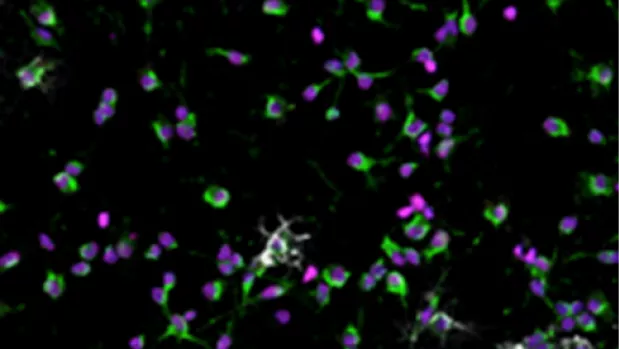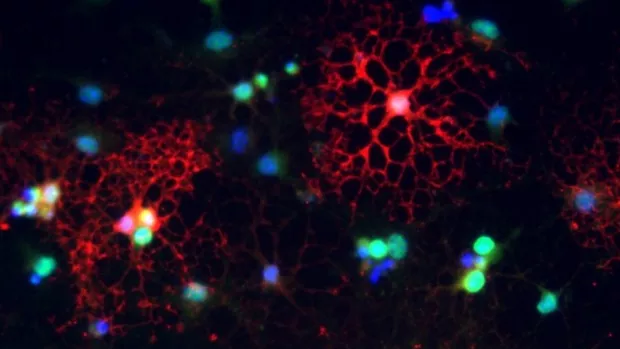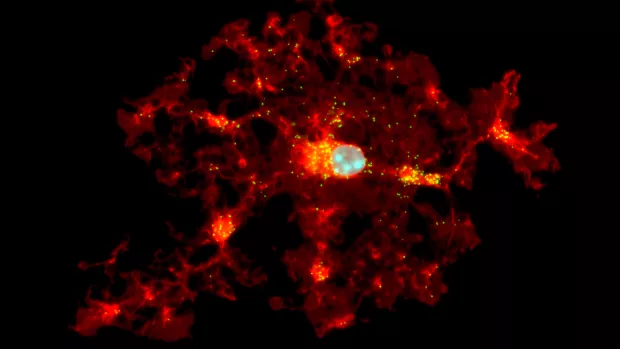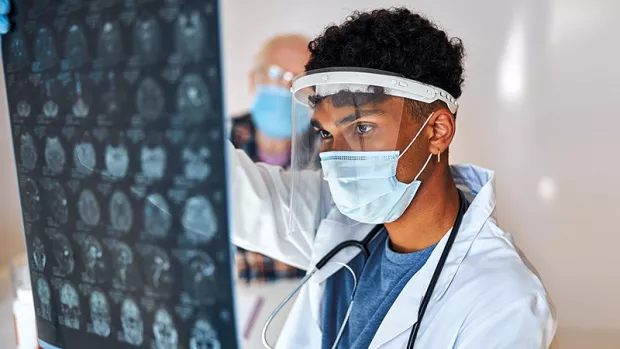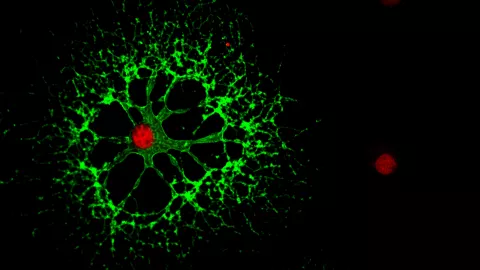
New research could explain myelin repair differences
A new study from the University of Edinburgh shows myelin-making cells have different characteristics depending on where they are in the body. This could explain why myelin repair is so variable, even within one person.
The brain and spinal cord contain myelin-making cells, which protect and support nerves. By better understanding how the cells make myelin, researchers can design new myelin repair treatments.
What did they find?
In a new study which we part-funded, researchers found cells in the spinal cord make myelin in a slightly different way to cells in the brain. This was true even when the cells were from the same person’s brain and spinal cord.
So, myelin-making cells are not just different between people. They’re different even within the same person, depending on their location in the nervous system.
Why is this important?
In MS, myelin repair of spinal cord lesions is less successful than in brain lesions, but it’s unclear why.
If myelin-making cells behave differently in different parts of the body, then it’s important for developing progressive MS treatments. Some drugs might be more effective for some cells than for others.
When designing trials of new myelin repair drugs, researchers could separate out results from just the brain or just the spinal cord. This could increase success in trials, because researchers could identify a drug that helps one area more than another.
Professor Anna Williams, Honorary Consultant Neurologist and Professor of Regenerative Neurology, led the study, and says:
“Our new research highlights the need to consider different types of myelin-making cells across the body. These findings make us think cells might have different responses to myelin repair treatments. It should lead us to change how we develop therapies for conditions like MS, from the lab all the way to clinical trials.”
Read more about Anna's work and watch her give the 2022 StopMS lecture
How did they do it?
Anna's team wanted to find out more about healthy myelin-making cells across the body, so they looked at cells from the brain and spinal cords of 20 people with no neurological conditions.
The team collected incredibly detailed information from nearly 50,000 individual cells. They used this information to predict how each cell behaves in the body. And pick out any differences. They compared the cells from different locations in the brain and spinal cord.
Dr Catherine Godbold, our Research Communications Manager says:
“We're delighted to have helped fund this exciting research. MS can be relentless, painful and disabling, and people urgently need treatments that can repair damage to myelin - the protective coating that surrounds nerves.
“This latest discovery from Edinburgh reveals more about how myelin-making cells work in the body which could influence how we develop and test potential myelin repair treatments for MS in the future, as well as ultimately helping pave the way to treatments that are personalised to the individual.”
The team hope to make more findings using the information from these cells. And, future research could do the same with cells from people with MS.

